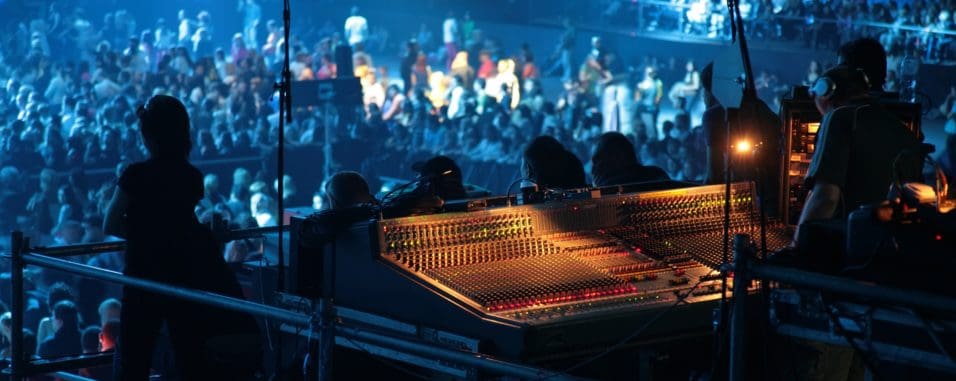There are a variety of ways to get into sound design in the theatre, including formal training and less formal training. While formal training is important, it isn’t necessary for aspiring sound designers. There are several factors to consider, including tools and techniques, as well as the human element. Here are a few tips to get you started.
Less Formal Training Is Less Important for Aspiring Sound Designers
Aspiring sound designers in the theatre can take several routes to become successful in the field. Although formal training is not always required, some jobs require it. For example, sound designers may work for an opera company or on a musical. Others may be involved in film productions. Regardless of your background, it is essential to understand how sound works in the context of a theatrical production.
Techniques
Sound design techniques in theatre are essential for creating the right atmosphere and setting for a play. This includes music and sound effects that can establish time and place, enhance the atmosphere, and create an emotional response. The sound design aims to add to the experience and not distract from it.
During rehearsals, sound designers should discuss the specifics of the play and how they plan to implement them. This requires that they reach a consensus within the creative team about the final outcome. The sound designer should also consider the audience and how sound effects affect them. Sound design is not a simple process and requires flexibility, especially during technical rehearsal.
Theatre sound engineers must learn to manage different types of sound, including live and pre-recorded sound. One type of recording is called the binaural recording, which uses two microphones and headphones to give the listener an immersive experience of the sounds around them. For example, the sound in The Encounter transferred from the stage deep into the heads of the audience.
Regardless of the genre, theatre sound designers must be able to work within the creative team. They must also be able to be flexible and adapt to changes in the script and the production’s style. This is one of the most important aspects of sound design. It helps set the tone and the mood of a performance.
One of the most important aspects of good sound design is that everything that happens on stage contributes to the audience’s experience. This includes the actors’ voices and a cast’s actions. The sound designer should try to mimic these sounds in their production. A realist production should mimic the sound of a real life environment as much as possible. Similarly, partial realism means that the production may incorporate both realistic and non-realistic elements.
In addition to using musical instruments, sound designers should also consider the configuration of the performance space. Different configurations of the performance space have different challenges. The sound designer should consider where to place the speakers and which sounds to use. In addition, sound designers must carefully plan the routing of sound, which involves sending a specific sound to a particular speaker.
Tools
Tools for sound design in theatre include music and sound effects. Sound designers typically work with the director and other design team members to create a cohesive look for the production. They will work to understand the script and collect information on any sounds included. The sound designer will meet with the production team early on to discuss ideas and create a plan for the production.
Tools for sound design in theatre vary depending on the type of show. Musicals, for instance, use musical music to move audiences from the realistic tone of book scenes to stylized numbers. Musical scores may also incorporate montage, a theatrical technique that relies on sound to connect disparate images. The tools used by the sound designer will depend on the director’s concept, as well as the composer and musical director.
The sound designer will also choose the location and quality of the sound. Modern theatres usually install speakers at various locations in the auditorium. The sound designer will plot the locations of the speakers and the cables. Using this information, the sound designer can determine the most effective way to place the speakers throughout the performance.
Tools for sound design in theatre should be used to create a soundscape that is immersive. This requires the use of audio effects, props, and the environment itself. Sound designers should be able to manipulate the audience’s perceptions by adjusting the volume of different sounds. This way, the audience will be able to suspend their disbelief.
Audio tools for theatre sound design include sample libraries, plugins, and sound processing software. Some of the best tools for theatre sound design are dedicated to the creation of cinematic percussion and audio effects. Some of the tools are more complex than others and require specific licensing. To use these tools, you should have a thorough knowledge of the different types of sound equipment.
Tools for sound design in theatre have evolved significantly over the last twenty years. In the past, sound designers were limited to recording on magnetic tape. This required expensive studio time and large equipment. Access to recording facilities was also limited and was usually restricted to theatre gatekeepers.
Human Element
The Human element in sound design in theatre is an important element of the performance experience. In order to be effective, sound must be able to capture the attention of the audience and inspire imagination. This means balancing the roles of voice and sound and being aware of the limitations of the theatrical environment.
Sound design in theatre encompasses everything that the audience hears, including music, sound effects, props, and ambient noise. It is vital to create a comfortable listening experience for audience members. A sound designer acquires recorded or live sound effects, collaborates with the director to determine the type of sound to use, and sets up the sound system in a theatre or other performance venue.
Sound design can be done in two ways: during rehearsals or during run-throughs. It can be scheduled during on-stage staging rehearsals or separately in collaboration with the stage manager. The actors will be familiar with the cues, and the sound designer should avoid interrupting these rehearsals.
While technology allows for a seamless transition from one cue to another, it still requires human oversight. A sound technician must constantly monitor the sound and make adjustments accordingly. A good sound designer will also be aware of the dynamics and timings of a performance and be able to adapt to any changes.
Sound and music design have a longer tradition. The first time a sound designer was credited in mainstream theatrical production dates to 1959. Before that, there was a traditional view of sound as a product of technical craftsmanship rather than of artistic intent. Today, however, this view has changed dramatically.










